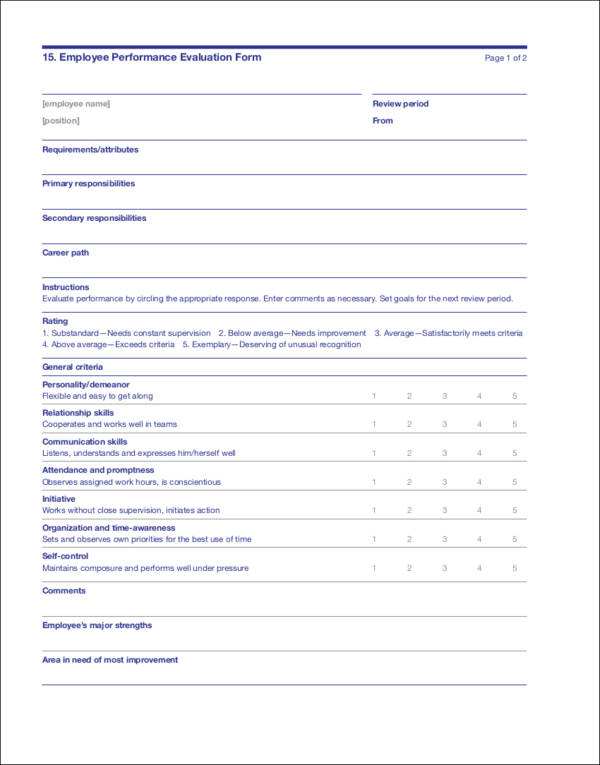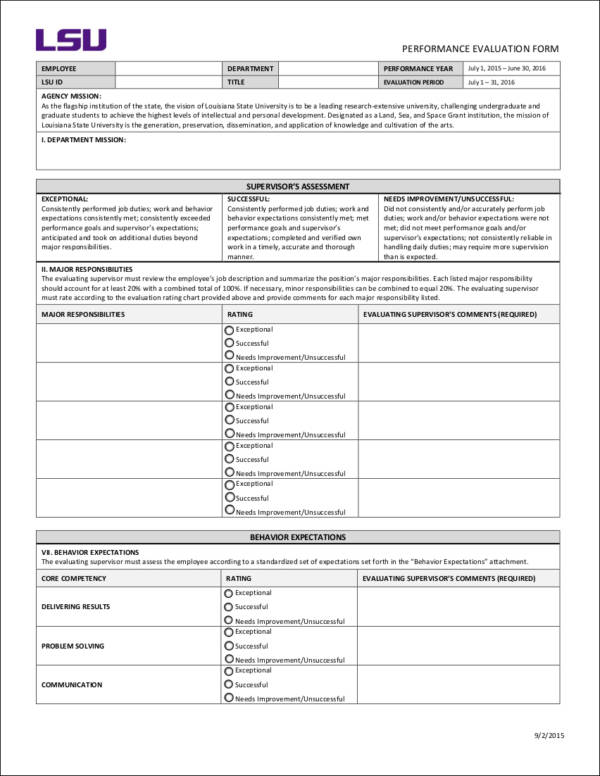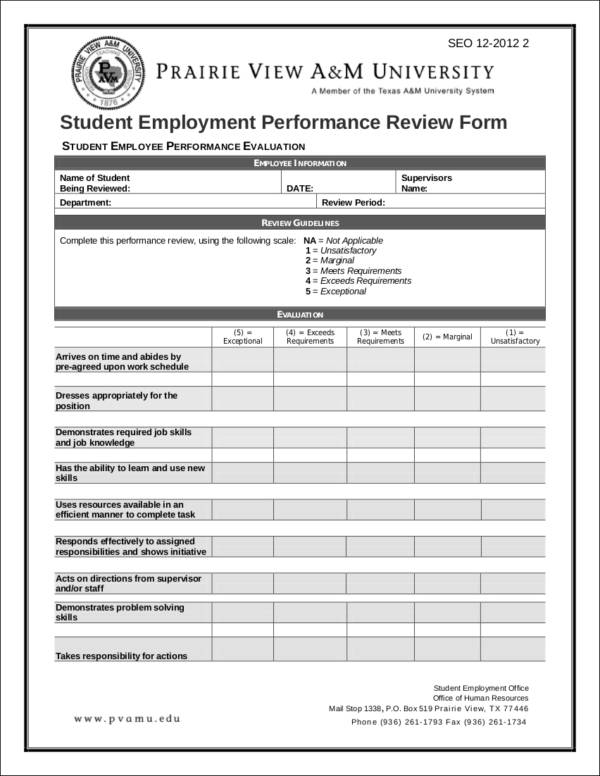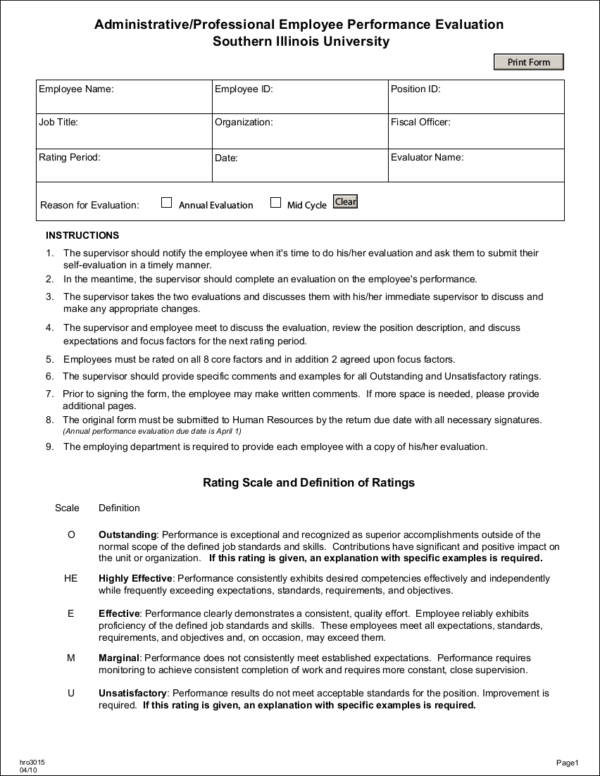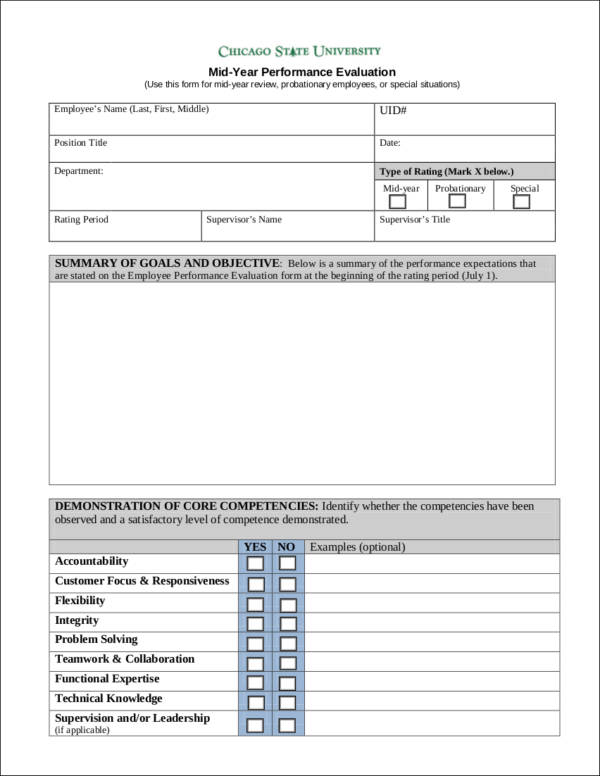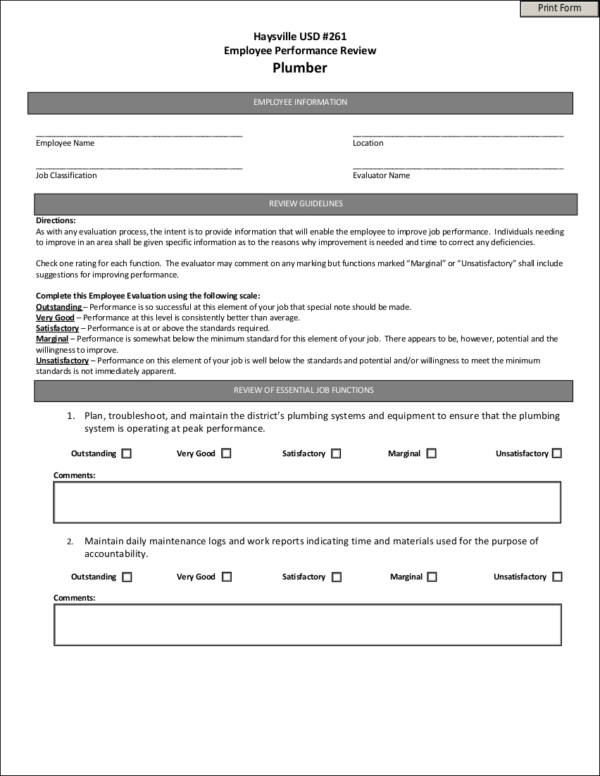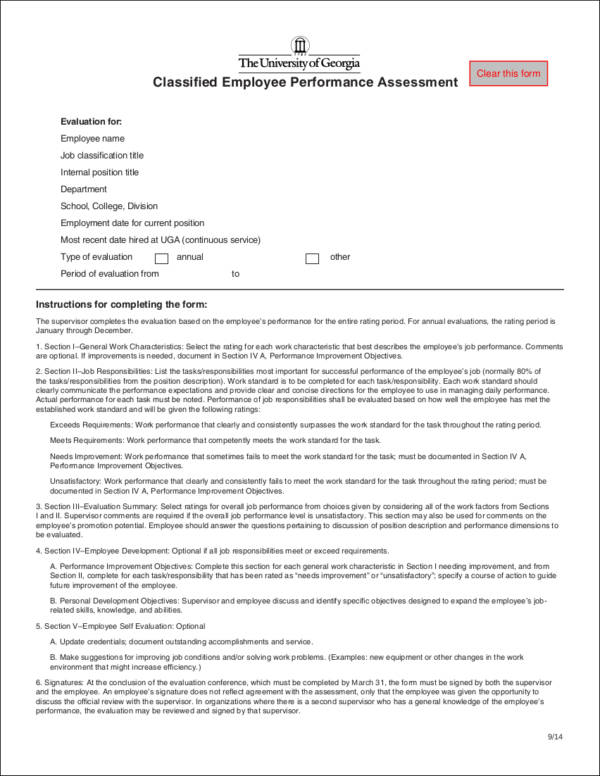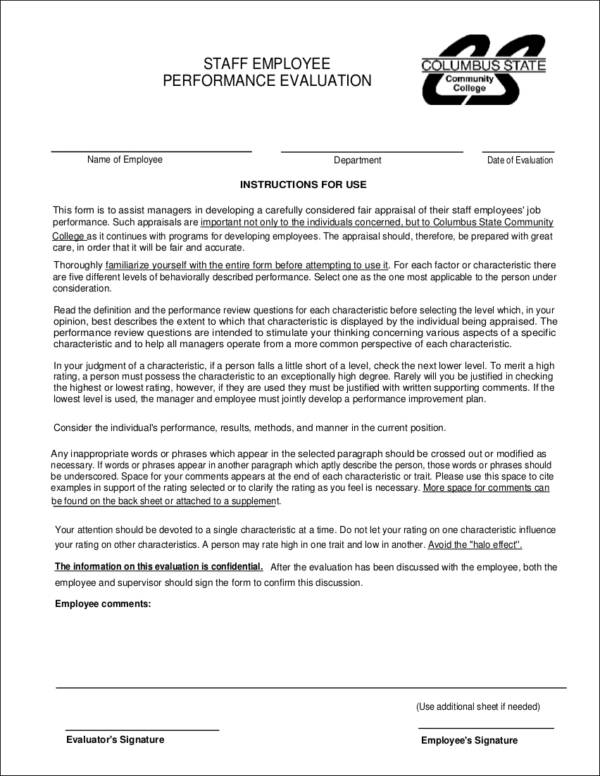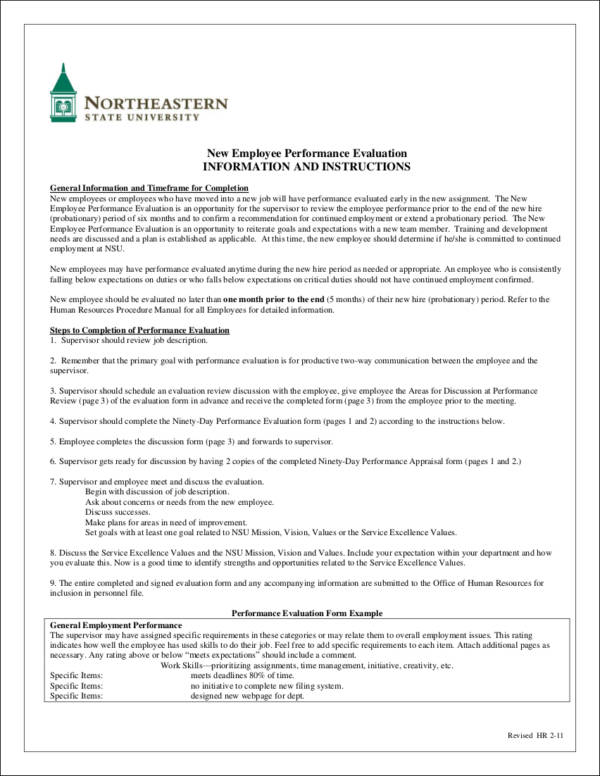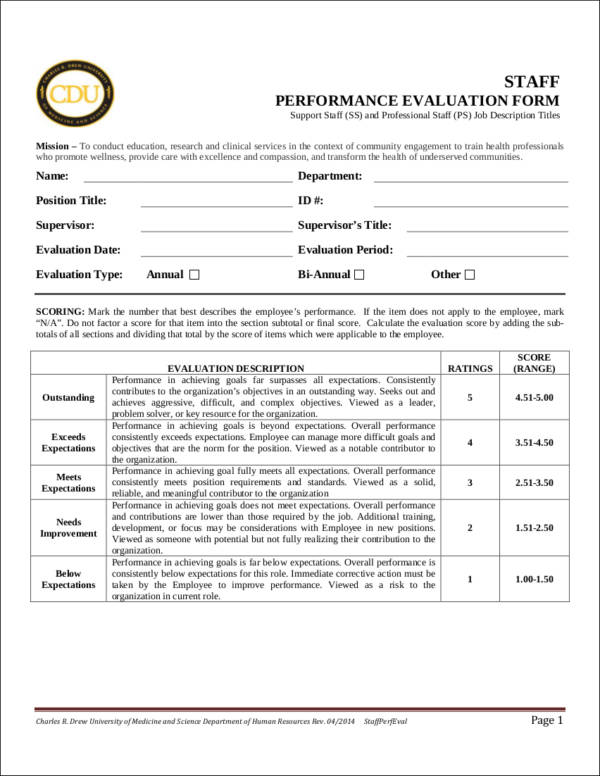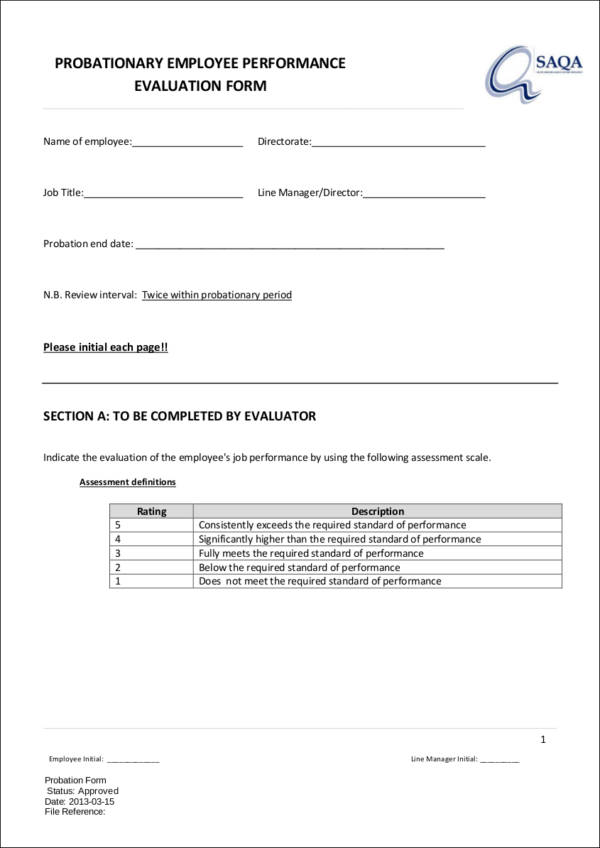Why do businesses and organizations assess or evaluate their employees? There are many reasons why an evaluation is important for businesses. Since employees are essential parts of any business or entity, ensuring that they are effective in the job that they do can benefit both the business and their employees. Companies usually conduct employee evaluations once in a year to identify the strengths as well as the weaknesses of a particular employee. Through this, employers will be able to develop training programs and other methods to improve the performance of their employees.
To be able to effectively evaluate and assess employees, having an evaluation system is necessary to get accurate results. An employee performance evaluation form is a document or tool that is used to measure the skills, abilities, strengths, weaknesses, and other aspects of an employee. This article will be useful to you if you want to read about the goals of an employee evaluation, the steps to conduct an evaluation, methods, and some tips to ensure that you will have an effective employee evaluation. In this article, you will also find employee evaluation samples and templates that you can download should you need to conduct an employee evaluation for your business.
Employee Performance Evaluation Form Template
Annual Performance Evaluation Form Template
Student Employee Performance Evaluation Template
Sample Administrative Employee Performance Evaluation Form
Mid-Year Performance Evaluation Form Template
Purpose of Employee Performance Evaluation
An employee evaluation is a useful tool in accurately measuring an employee’s performance in the workplace. Acknowledging an employee’s satisfactory performance is important in any business. To be able to effectively and accurately do this, you need an employee evaluation. An employee performance evaluation is conducted for a number of reasons. The purpose of an employee performance evaluation are as follows:
- An employee evaluation form is used by employers to make employment decisions such as in regularizing employees, promotions, pay raises, termination or laying off of employees.
- Through an employee performance evaluation, businesses will be able to determine an employee’s strengths and weaknesses for the purpose of improving his/her weak points.
- An employee performance evaluation is done to determine if an employee needs to undergo training to improve certain aspects of his/her performance.
- An employee performance evaluation shows an individual’s contributions to the company as well as his/her shortcomings.
- An employee performance evaluation is used as a basis whether an employee qualifies for a promotion as well as an increase in his/her pay.
- An employee performance evaluation also helps employers determine if an employee is no longer performing well and doesn’t meet the expectations or standards of the company. This will help them decide whether to terminate that particular employee or not.
Temporary Employment Performance Evaluation Template
Plumber Employee Performance Evaluation Template
Classified Employee Performance Assessment Form Sample
Goals of Employee Performance Evaluation
Businesses and organizations conduct a performance evaluation for their employees in order to achieve a list of goals. These goals are important to be able to achieve an effective and useful performance evaluation. The goals of an effective employee performance evaluation are as follows:
- Both the employer and the employee should be clear about the goals, employee expectations, and how an employee’s contributions are going to be assessed.
- The goal of every employee performance evaluation is to develop and improve both the organization and their employees. Through the results of an employee performance evaluation, managers or supervisors will be able to identify areas that need improvement allowing them to outline the development goals that an employee needs to accomplish.
- Another goal of an employee performance evaluation is to increase the productivity of employees in the business or organization through setting the expected output that is needed to be accomplished.
- Since employee performance evaluations help employers develop training programs, certifications, etc., employees will become more valuable since they are able to improve certain aspects of their skills, knowledge, etc.
Guidelines for Conducting Employee Performance Evaluations
Employee performance evaluations are critical to the overall operations of the company. Employee evaluations assure that a company’s employees will meet the organization’s standards and that they are doing what is expected of them. Without conducting employee performance evaluations, the company’s credibility will lessen as well as the effectiveness of both the company and their employees. Here are some of the guidelines that you can refer to when conducting your employee performance evaluation.
- Before you perform an employee evaluation, it is important that you establish a legally valid performance evaluation system to ensure that you will be conducting the evaluation accurately.
- A performance evaluation form contains all the essential elements such as the performance aspects or competencies, a rating system, feedback section, and a plan that will help you gather all the essential information and data when conducting your employee’s performance evaluation.
- Schedule an employee performance evaluation at least once a year or six months after an employment.
- Inform the employee that you will be conducting a performance evaluation and remind them of the evaluation process.
- Provide a written input of the evaluation. You can also provide them with a self-evaluation so that you can include the employee’s inputs in the overall evaluation.
- Hold a discussion with the employee to be able to talk about the results of their evaluation. Give feedback regarding their performance. Also, you can ask the employee for his/her feedback about the issue or evaluation.
- Now that you have the essential data and you have discussed it with your employees, create and set goals for the employee to achieve in order to improve his/her skills.
Career Employee Performance Evaluation Form Template
Staff Employee Performance Evaluation Form Sample
New Employee Performance Evaluation Form
Health Professional Employee Evaluation Form Sample
Probationary Employee Evaluation Form Sample
Tips for an Effective Employee Performance Evaluation
As previously mentioned, an employee performance evaluation is essential in every business. Although a performance evaluation can vary from organization to organization, the evaluation process is basically the same. If you need tips to create and conduct an employee performance evaluation, we have gathered some essential tips that will be useful when creating and conducting an effective performance evaluation for your employees.
- Always provide feedback to your employees regarding the results of the evaluation or assessment that was conducted.
- An effective employee performance evaluation should include all the necessary and accurate information in order to get the right results.
- Gather all the essential information and data before you start conducting your employee evaluation. This is to ensure that you will have a smooth flow when you start evaluating.
- Understand the purpose of the evaluation that you will be conducting. For example, an evaluation can be done for the promotion of an employee, an increase in his/her pay, or for laying off ineffective employees.
- Review and proofread the contents of your evaluation form before you finalize your document to ensure that all the information is correct.
- When giving feedback, be honest and provide constructive criticism to your employees so that they will clearly understand what they need to improve on.
Employee Performance Evaluation Methods
There are various methods that can be used when performing an employee evaluation. Although you can use just one method to measure a particular aspect of the employee’s performance, incorporating a number of these methods when evaluating will give you a better scope of the employee’s performance. For you to be able to further understand the purpose of each, the methods for employee performance evaluation are as follows:
- Self-Evaluation – self-evaluation refers to the method wherein an employee will evaluate his/her own performance in the workplace. This method is useful when it is conducted with an employee evaluation done by the manager or supervisor of that particular employee. The manager can compare his evaluation to the self-evaluation done by the employee.
- 360 Evaluation – in this type of evaluation method, an assessment or evaluation is done by an employee’s manager in his/her own department as well as the other departments within the company where the employee has worked with. This will help employers understand how effectively an employee works not only in his/her own department but also with the rest of the departments in the business.
- Graphic Scale – the graphic scale is one of the most common methods that employers and managers use for their employees. This method involves using a rating scale that will measure the performance of employees from poor to an excellent performance. This can either be done using numbers or letters depending on the form being used. Through a graphic scale, employers will be able to compare the performance of a particular employee with other employees within the company simultaneously.
- Checklists – a checklist is a simple method of evaluation. A checklist contains a number of questions that an employee needs to answer. Only a yes or no answer is required in a checklist, which helps employers identify the areas that the employee has deficiencies. Through this, you will be able to identify whether an individual needs to undergo training.
Additionally, if you need to create other types of evaluation forms such as an HR evaluation form, staff evaluation form, training evaluation form, etc., you can download the samples and templates available for download on this site.
Related Posts
Sample Sworn Affidavit Forms
Vehicle Inspection Forms Samples & Templates
Sample Employee Advance Forms
Sample Child Travel Consent Forms
Sample Testimonial Request Forms
Sample Employee Details Forms
Sample Divorce Forms
Sample Attestation Forms
Employee Performance Appraisal Form Templates
FREE 9+ Sample Presentation Evaluation Forms in MS Word
FREE 10+ School Admission Form Samples & Templates in MS Word | PDF
FREE 30+ Patient Consent Form Samples in PDF | MS Word
FREE 10+ Sample Sign Off Form Templates in PDF | MS Word
FREE 11+ Sample Medical Consultation Forms in PDF | MS Word
FREE 8+ Sample Donation Forms in PDF | MS Word

